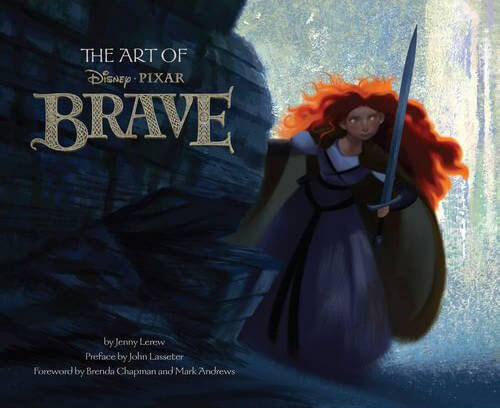The Art of Brave – Book Review
Whilst Brave was not the thunderous return to form that most Pixar fans had longed for following Cars 2, it was a solid piece of work, easily capable of making rival studios jealous at the Pixar standard. The ‘Art of’ books are very good at displaying the back history of films so the reader can find out more about what went into a production many years in the making.
The film deserves applause for its many firsts, namely Pixars realisation of a princess, a huge difference to the majority of Hollywood princesses that have been portrayed on screen in much the same way since Snow White 75 years ago. Here we see a princess without the usual love interest or penchant for singing their every emotion. The team also put great effort into the layout and design of this film which is what these books demonstrate the best.
Seeing the choices that went into crafting Brave is a real treat, and should serve as great inspiration to those who choose to take a peep at the different methods that where decided upon before the final film was finished. For example Laid out in sketch form are various renderings of Queen Elinor’s transformation, which wasn’t shown in the final film, but here we see both a dramatic interpretation and a comedic one by Steve Pilcher and Matt Nolte. The books selection of artwork help make this book informative to the process that made this film without just throwing nice looking pieces of artwork in for the sake of it. Whilst the majority of features nowadays seem to be created using digital artwork one may find the abundance of digital work off-putting but thankfully it is only included in this book where necessary. It is a shame that we do not see the beautiful pastel storyboards from ‘Finding Nemo’ or the creative collages from ‘The Incredibles’ books but each director has a different approach and in return we get some beautifully realised landscape shots and character work that make this film stand out from the competition. The shock of red hair against carefully composited backdrops feature throughout.
This book will please the Pixar fans wishing to find out more about director Brenda Chapman’s vision of a relationship between daughter and mother before it became the collaborative process that it did with Mark Andrews earning the directors credit. It’s sure to make a perfect accompaniment to the film when it is released for anyone passionate enough about production.



